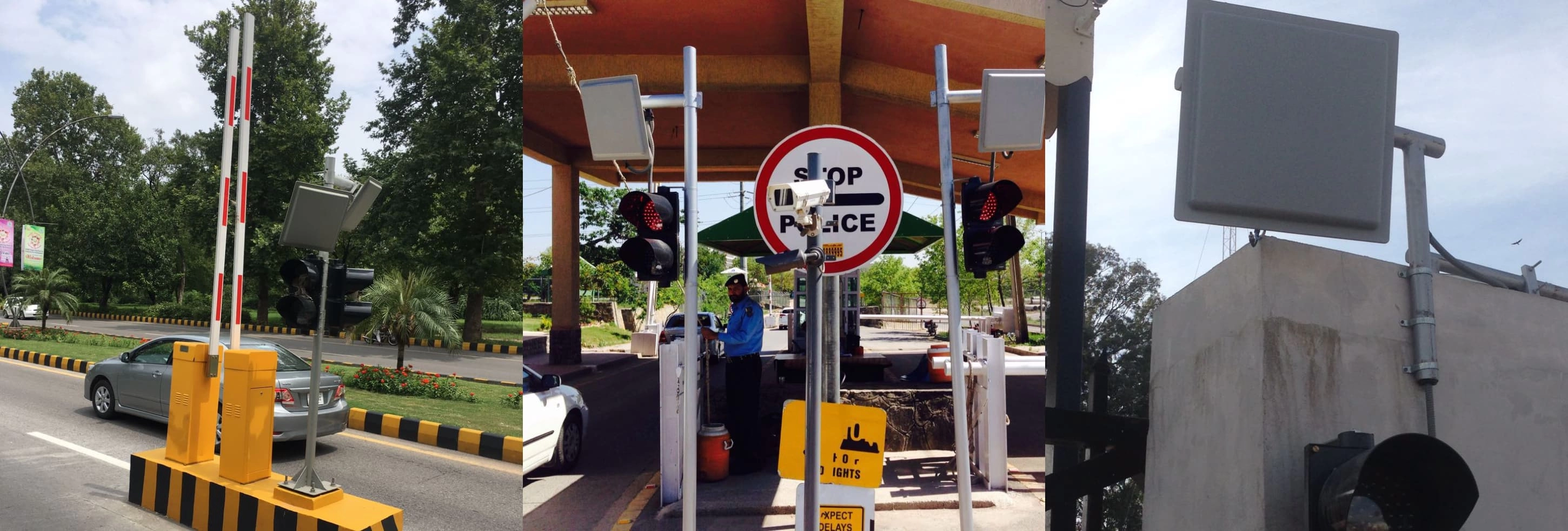Can UHF RFID readers be used outdoors?
With the rapid development of informatization and intelligentization, UHF RFID technology has become a vital component in numerous industries, including logistics, warehousing, access control, intelligent transportation, and asset management. Across various application scenarios, the question "Are UHF RFID readers suitable for outdoor use?" has become a top concern for enterprise users and system integrators.
This article will comprehensively address this question from multiple perspectives, including the operating principles of UHF RFID readers, challenges in outdoor environments, technical solutions, product selection recommendations, and practical application cases. This will help you scientifically evaluate the feasibility and stability of UHF RFID readers in outdoor environments.
1. Basic Principles of UHF RFID Readers
A UHF RFID reader is an electronic device used to identify RFID tags in the UHF frequency band (860-960 MHz). It uses an antenna to transmit electromagnetic waves for contactless communication with the tags, reading the stored data and enabling remote identification and management of objects. Features include:
Long-range reading: Theoretically, the range can reach over 12 meters.
High-speed identification: Reads hundreds of tags per second.
Strong group reading capability: Supports anti-collision protocols, enabling simultaneous reading of multiple tags.
Contactless identification: Requires no line of sight or physical contact, resulting in high efficiency.

2. Major Environmental Challenges for Outdoor Use
Although UHF RFID reader technology is mature, the outdoor environment remains complex and variable, placing higher demands on device performance:
2.1 Extreme Climate Conditions
High Temperatures and Severe Cold: Due to large temperature swings outdoors, equipment must be capable of operating over a wide temperature range.
Rain and Rain: Rainwater infiltration and circuit shorts are common hazards.
Sunlight Exposure: Prolonged exposure to ultraviolet rays can cause degradation of the outer casing and heat up internal components.
2.2 Dust and Pollutants
In locations such as ports, construction sites, mining areas, and waste disposal stations, dust, oil, and corrosive gases can enter the device, damaging circuit boards or RF modules. 2.3 Electromagnetic Interference
Outdoors may contain numerous industrial equipment, power grids, and radio communication systems, generating complex electromagnetic interference that may affect the reader's recognition accuracy and stability.
2.4 Humidity and Condensation
When the temperature difference between morning and evening is large, condensation is likely to form inside the device, affecting circuit reliability and even causing short circuits.
3. Technical Solutions for Meeting the Challenges of Outdoor Environments
To address these challenges, high-quality UHF RFID readers on the market generally incorporate multiple design optimizations and protective measures to ensure long-term reliable outdoor operation.
3.1 Industrial-Grade Housing Design
IP65/IP67 protection rating: Dustproof and waterproof, resistant to strong winds, rain, and dust.
UV-resistant material: The UV-resistant housing resists aging and extends its service life.
Metal housing provides excellent heat dissipation: Effectively reduces internal temperatures, ensuring stable operation at high temperatures.
3.2 Wide-Temperature Design
Supporting a wide operating temperature range of -25°C to 70°C (-25°C) or even higher, it is suitable for harsh environments such as plateaus, deserts, and cold regions. 3.3 Circuit Protection Design
Overvoltage protection, lightning protection, and surge protection: These protect against unstable power input due to thunderstorms, power grid fluctuations, and other factors.
Industrial-grade filter circuits: These prevent electromagnetic interference and ensure RF signal stability.
3.4 Anti-condensation measures
Some readers are equipped with internal heating modules or desiccant components to automatically adjust internal temperature and humidity to prevent condensation accumulation.
4. How to Choose UHF RFID Readers Suitable for Outdoor Use?
When selecting a suitable outdoor UHF RFID reader, it is recommended to consider the following aspects:
4.1 Protection Rating
When purchasing, be sure to check whether the product has IP65 or higher protection rating certification. A higher IP rating indicates greater dust and water resistance, making it more suitable for harsh outdoor environments.
4.2 Operating Temperature Range
For readers used in extremely cold or hot environments, choose models with an industrial-grade wide-temperature design. 4.3 Protocol Support and Tag Compatibility
Preferably select readers that support EPC C1G2/ISO 18000-6C protocols to ensure system versatility and scalability.
4.4 Antenna Compatibility
Select devices that support multiple external antennas to customize coverage angles and read ranges based on actual outdoor scenarios.
4.5 Brand and After-Sales Service
We recommend choosing brands with extensive industry experience, such as MarktraceRFID, Zebra, Impinj, and Alien, to ensure reliable quality and professional technical support and after-sales service.